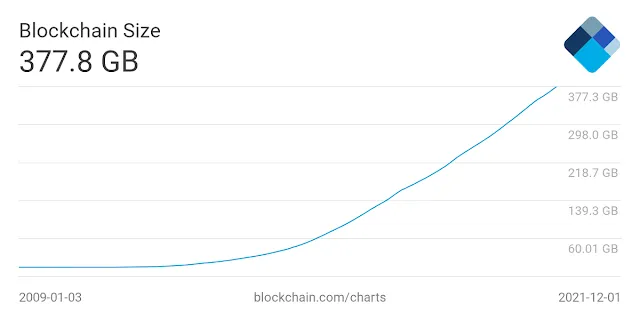As the price of cryptocurrencies continues to expand, an increasing number of crypto miners are entering the market. To date, there are believed to be over a million individual Bitcoin miners (if we look at numbers from several crypto communities). As a result of China's mining ban, the United States has recently become the world leader in mining.
Our focus on an activity that remains widespread, practiced by specialized companies and networks of minors, including individuals at their homes. Here are our tips for mining cryptocurrencies.
How does cryptocurrency mining work?
Mining is the backbone of the cryptocurrency industry. It is indeed necessary to secure the network by validating transactions and archiving operations. So when two virtual currency users exchange with each other, the transaction is verified and the data that traces the exchange must be added to what is called a block that is added to the already existing blockchain. This is called Blockchain technology.
Over time, the number of validated blocks grows: at the end of 2021, there were nearly 380,000 validated blocks on Bitcoin, against 150,000 in January 2018. The graph below, taken from blockchain.com, represents the number of blocks existing since 2009, we observe that growth is accelerating beyond a linear logic. The size of the blocks is thus correlated with the electricity consumption of the miners according to the Cambridge study. Electricity consumption for Bitcoin mining alone is equivalent to that of the Netherlands.
Bitcoin Blockchain Size
So the other parameter that miners should take into account is the size of the block. Indeed, each block has a limited data storage size. This block size is around 1.5 Megabits at the end of 2021. When each block is validated, there is a "hash", that is to say the addition of a header to the new block from of the previous one. The first of the miners to find the hash wins the reward in Bitcoin or other for the various virtual currencies. As the data storage needed to validate a block has tended to stagnate in recent years, the number of validated blocks increases more quickly and the mining difficulty increases similarly.
Average Block Size Of The Bitcoin Blockchain
Currently, miners take 7-9 minutes to confirm a block. In addition, the number of transactions per second on Bitcoin is around 3.5 transactions per second on average, a share which has remained fairly stable overall for several years. But at the same time, the total number of transactions validated by minors is increasing even more strongly. The miners thus ensure minimum efficiency of the system. At the start of 2021, most of the mining was carried out in Asia and North America. But with China's will to restrict cryptocurrencies, China's contribution to mining has collapsed, leading the United States to become the main player in mining.
To facilitate mining, it is common to see the emergence of communities of miners, called "pools". At the end of 2021, the three dominant pools in Bitcoin mining were AntPool, F2Pool, ViaBTC. Besides, there is Slushpool. which account for nearly 40% of all documented hashes in Bitcoin. On Ethereum, the main pools are F2Pool, Ethermine, and Ethfans. These pools are globally accessible to many people.
Mining can be done with its own hardware using software by participating in a pool of miners. The goal of miner pools is to pool data processing capabilities to increase the chances of having rewards and sufficient network fluidity. It is also possible to mine alone using software that can be downloaded to your computer, such as BFG miner or CG miner, which provides access to various pools. To receive the rewards, it is important to create or associate your Bitcoin or other address with the software.
How Much Does it Cost to Mine a Bitcoin?
In order to be able to mine effectively, it is important to have sufficiently powerful equipment. Indeed, it is the computing and processing power of the miner that will determine its performance on the network. Thus, your computer must have three fundamental elements: a powerful hard disk to store the software, a motherboard which makes it possible to improve the hashing performance, and finally a graphics card which makes it possible to improve the computing power (typically the AMD Vega cards or even Nvidia RTX 2080).
Regardless, mining remains an activity that is still difficult for everyone to access. Indeed, it is often recommended for an individual mining to obtain what is called a mining rig (an ASIC system). As a precaution, it will be recalled that the difficulty of mining has never been greater on Bitcoin, which makes it difficult to access and poses profitability problems for mining carried out by individuals. The hash rate per second has increased dramatically in recent years, while most of these hashes are done by only a few platforms (pools).
Although the pool model is generally valued by individuals, it is still possible to get specialized rigs (Antminer S9 or WhatsminerM3X for Bitcoin).
Is Bitcoin mining investment profitable?
Once the mining mechanism is established, the question of gain arises. On Bitcoin, the volumes traded by miners are relatively variable from period to period. As shown in the graph below, the volume processed by the network follows rather cyclical logic. The waves of transactions vary the mining difficulty, that is to say the validation time of transactions, the fees charged, etc. As of today, there are approximately 2,000 Bitcoin block transactions processed. The remuneration of miners per transaction is between 0.5% and 1% per block.
Bitcoin Transaction Volume In Us Dollars
Indeed, the reward per block is 6.25 BTC, that is to say the equivalent of 300,000 euros in December 2021. It should also be remembered that the number of blocks validated per day is almost 100 blocks at the end of 2021. , that is to say nearly 625 new Bitcoins per day and the equivalent of 115,000 Bitcoins paid to minors every 6 months in the current state of the market. The annual remuneration shared by the miners is equivalent to € 11.5 billion at the price of € 50,000 per Bitcoin. The gain for the miner is therefore more and more important as the volume corresponding to the transactions grows, as the computing power increases, and as the number of transactions to be processed is large. This is the reason why the greater popularity of a cryptocurrency tends to increase its profitability for miners.
Nonetheless, in terms of profitability for individual miners, Ethereum can be a good alternative. Indeed, unlike Bitcoin which often requires ASICs (very specialized computer hardware which refers to an "application-specific integrated circuit"), Ethereum mining is generally sufficient with traditional hardware, including graphics cards. The same observation is applicable to Litecoin mining or even dash mining.
Our Tips For Mining Cryptocurrencies
To mine virtual currencies, it is therefore necessary to have sufficiently powerful equipment. As mentioned above, it is possible with software like BFG miner or CG miner to join pools of miners who share the rewards. This model has established itself in recent years as the benchmark mining model, with large mining pools predominantly dominating the activity observable to date. There is also software for mining other cryptocurrencies such as EasyMiner for Litecoin or Claymore for Ethereum.
Ultimately, cryptocurrency mining remains an activity in its own right, the value of which can be estimated for Bitcoin alone at more than 10 billion euros per year. The most effective solution for individual miners is usually the use of dedicated software and platforms, in particular through the use of pools. However, it is still possible to use traditional dedicated and more efficient systems (ASIC or conventional hardware). The investment required is often several thousand euros while the associated rewards are currently around 0.8% of transactions processed. Although complex, mining remains the condition for the existence of the Blockchain and ensures the proper functioning of all crypto assets around the world.





